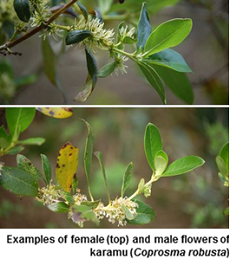Why our native plants are not so special after all
Victoria University scientists are calling into question a long-held belief about our flora, saying that maybe it’s not so different after all.
New Zealand’s native plant life is renowned by botanists the world over for its uniqueness. But scientists at Victoria University of Wellington are calling into question a long-held belief about our flora, saying that maybe it’s not so different after all.

“There are several characteristics of New Zealand flora that are iconic—early botanists that visited New Zealand were astounded by how unusual the flora was,” says Professor Burns. “One of its distinctive characteristics is dioeciousness, where some plants are female and others are male. Dioeciousness is a guarantee that a plant can’t mate with itself—they must ‘outcross’ because they are separate sexes.”
Dr Burns says while dioecy is common in New Zealand, it’s not widely seen in most other parts of the world. This distinctive feature of New Zealand’s natural history has led to the development of a theory over the years that dioecy is more likely to occur on oceanic islands.
“The traditional explanation was that dioeciousness must be useful on isolated islands because it reduces the problems associated with inbreeding. However, other botanists have argued that this didn’t make much sense. Wouldn’t it be better for the colonising population to be hermaphroditic? That way plants could breed with themselves, which would go a long way to helping the founding population become established.”
Dr Burns says he and Matthew have brought together a range of evidence which shows that high incidence of dioecy occurs by chance—it’s a passive by-product of a chain of events that occurs around the world, rather than a distinctive attribute of New Zealand’s flora.
“New Zealand’s flora falls into a pattern that’s visible around the world, where wetter areas have fleshy-fruited plants with bigger seeds, and bigger seeds tend to be outcrossed. Dioecy is the best way of ensuring that outcrossing happens. We have simply collected data, connected the dots and completed the cycle of logic for the first time. We’ve shown that New Zealand flora is not as special as was once thought, in terms of dioecy anyway.”
